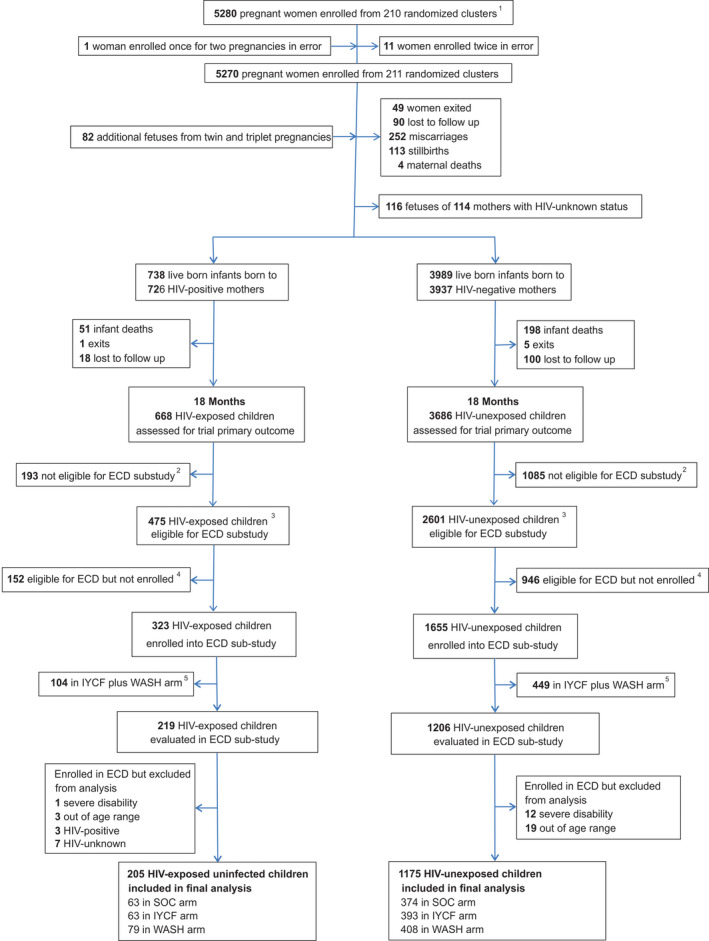Figure 1.

Flow of participants through the SHINE early child development (ECD) sub‐study. 1In all, 212 clusters were randomized, 53 in each of the four trial arms. After randomization, 1 cluster was excluded as it was determined to be in an urban area, 1 cluster was excluded as the village health worker covering it mainly had clients outside the study area, and 1 more was merged into a neighbouring cluster based on subsequent data on village health worker coverage. Three new cluster designations were created due to anomalies in the original mapping: for 2 of these, the trial arm was clear; the third contained areas that were in 2 trial arms, and was assigned to the underrepresented arm, resulting in 53 clusters in each arm. All of this occurred before enrolment began. When enrolment was completed, however, there was 1 standard‐of‐care cluster in which no women were enrolled, leaving a total of 211 clusters available for analysis. 2Children were not eligible for the ECD sub‐study if they turned two years of age (allowable range 102 to 112 weeks) before 1 March 2016. 3Children were eligible for the ECD sub‐study if they turned two years of age (allowable range 102 to 112 weeks) between 1 March 2016, and April 30, 2017. 4Children were eligible for the ECD sub‐study because they turned two years of age (allowable range 102 to 112 weeks) between 1 March 2016, and 30 April 2017, but they were not contactable or were not approached for consent because the number of children becoming 102 to 112 weeks of age between 1 March 2016, and 30 April 2017, exceeded the capacity of the 11 ECD‐trained nurses. 5Children in the WASH plus IYCF combined arm were excluded from this analysis because of an interaction between HIV exposure and IYCF plus WASH for the total MDAT score (p = 0.008, Wald test). IYCF: infant and young child feeding; SOC: standard of care; WASH: water, sanitation and hygiene.
